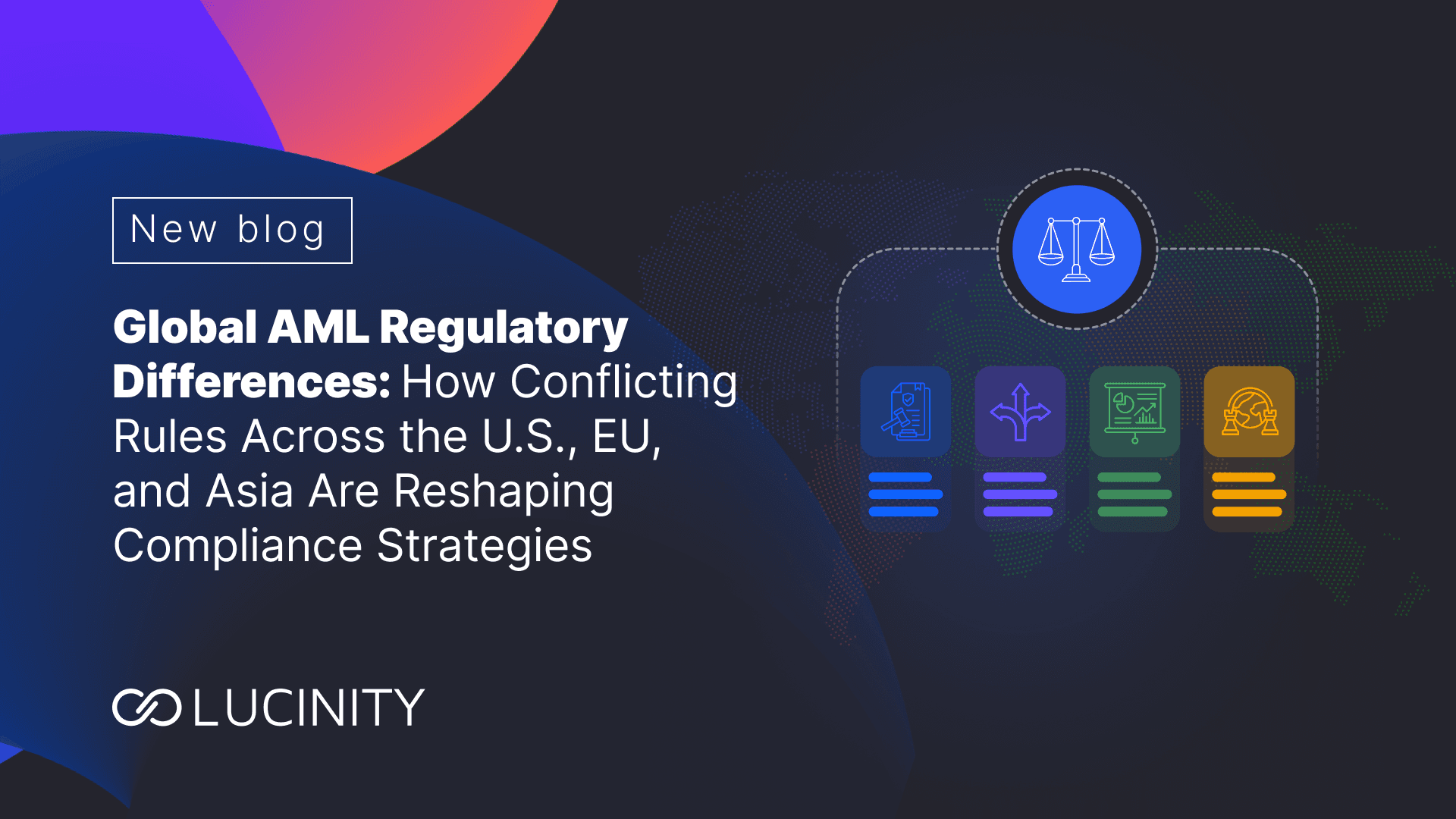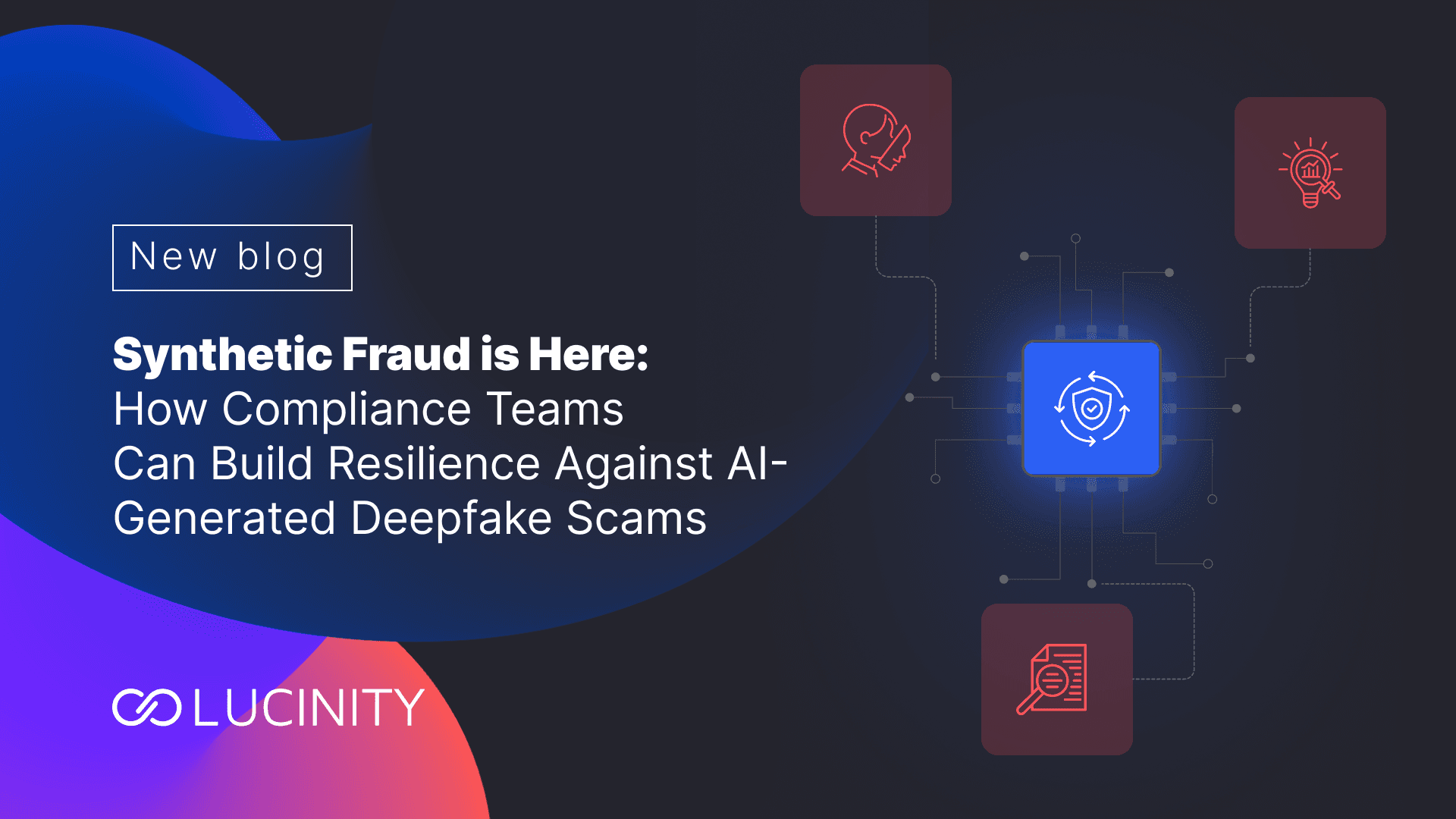The Role of Entity Resolution in Fincrime Investigations: From Fuzzy Matches to Precise Risk Signals
Learn how entity resolution improves accuracy, reduces false positives, and powers collaborative FinCrime investigations using AI and real-time data integration.
The challenge of managing large numbers of false alerts has long been a concern in the surveillance field. Recent surveys show that compliance officers must oversee over 100 false alarms for each genuine case that requires severe attention. This imbalance puts pressure on resources, slows down response times, and adds pressure to compliance operations across the financial industry.
Furthermore, regulators imposed $63 million in fines on a group of 12 financial firms for failing to maintain efficient communications compliance. This shows how operational blind spots can lead to costly regulatory penalties.
This is where entity resolution becomes indispensable. It involves identifying and unifying data related to the same person or organization across disparate databases and formats, enabling institutions to construct a single, accurate customer view using artificial intelligence. This blog examines how moving from data matches to clear risk indicators is helping institutions approach compliance with better results.
Understanding Entity Resolution
Financial institutions handle vast data from sources like transactions, onboarding, sanctions lists, and social media. Identifying fraud or money laundering requires linking related records, even when they differ due to errors, naming variations, or incomplete information.
Entity resolution involves identifying and combining records that refer to the same individual or organization, allowing for clearer and more accurate links across data sources.
Entity Resolution in FinCrime Investigations
At its core, entity resolution addresses the basic challenge of data inconsistency. For example, “John D. Smith,” “J.D. Smith,” and “Jonathan Smith” might all refer to the same person. Without connecting these identities, investigators risk missing red flags or duplicating efforts. In FinCrime investigations, this could mean the difference between halting illicit activity and letting it continue unnoticed.
Traditional matching systems usually depend on fixed rules, such as exact matches for names or addresses. Criminals take advantage of this by making small changes to avoid detection. Entity resolution systems use advanced algorithms to find likely matches, even when the information isn’t the same.
The FATF’s 2024 guidance highlights the need to identify beneficial owners and related entities. Entity resolution helps link data points that expose suspicious activities, like large deposits from connected shell companies, which majorly contributes to FinCrime investigations.
Key Benefits of Entity Resolution in FinCrime Investigations
Entity resolution improves the accuracy, speed, and quality of financial crime investigations. It brings together disconnected records into a single, complete profile, giving investigators a clearer and more dependable view of each case.
This reduces false positives by filtering out irrelevant alerts, helping teams concentrate on meaningful risks. It also shortens investigation time, as analysts no longer need to manually piece together scattered data from multiple systems.
Regulatory compliance is strengthened through advanced entity resolution, which offers clear audit trails and transparent decision-making aligned with current standards from organizations such as FATF and FinCEN. Consistent identification of entities across internal teams and external partners also improves coordination, enabling quicker, more aligned responses to financial crime while maintaining necessary privacy safeguards.
Advancements in Entity Resolution Techniques for FinCrime Investigations
In 2025, FinCrime networks are growing more complicated, using synthetic identities and layered shell companies. To respond effectively, institutions must treat entity resolution as a primary defense.
This section outlines eight key developments building its role in today’s investigations.
1. AI and Machine Learning for Adaptive Matching
AI-powered systems now use self-learning models that adapt based on new entity behavior. Instead of relying on static rules, these models learn from previous cases to improve future entity identification. Institutions using machine learning-enhanced entity resolution have achieved over 90% match accuracy, even in inconsistent datasets.
2. Real-Time Entity Resolution at Scale
One of the most transformative changes this year is the operationalization of real-time resolution. Financial institutions can now analyze streaming transaction data and identify potential threats within milliseconds. This immediacy is essential for real-time payment fraud prevention, helping compliance teams flag bad actors before transactions settle.
3. Graph-Based Relationship Mapping
Modern tools employ graph analytics to map relationships between entities, visualizing how people, accounts, IP addresses, and institutions are interconnected. This is important in FinCrime investigations, where fraudsters often use circular flows and network obfuscation. Graph-based mapping enables analysts to spot hidden risk patterns across seemingly unrelated accounts.
4. Natural Language Processing (NLP) for Unstructured Data
Natural Language Processing (NLP) allows systems to pull meaningful information from emails, transaction memos, and other unstructured sources. For instance, if a suspicious transaction is linked to an individual mentioned in an adverse media article, NLP-enhanced entity resolution can detect and flag that connection, even if names are spelled differently or in other languages.
5. Privacy-Preserving Computation Models
With the rise of data sovereignty laws, tools that employ homomorphic encryption and federated learning have become important. These methods allow institutions to collaborate on shared threats without compromising sensitive data.
6. Multilingual and Regional Data Compatibility
Global compliance teams need tools to recognize and resolve names across different languages and conventions. Advanced models are now trained on international datasets, significantly improving match rates in cross-border investigations, which is particularly important for institutions with multi-regional operations.
7. Continuous Learning Systems
Older systems needed rules to be updated manually and at regular intervals. Newer platforms use feedback loops that let analysts approve or reject matches as they happen. This ongoing input helps improve the system’s accuracy over time and is especially useful for AML teams handling large volumes of cases.
8. Visual and Usability Improvements for Analysts
Entity resolution is now more transparent and accessible. Modern platforms offer user-friendly dashboards, guided workflows, audit logs, and explainable AI. This helps compliance officers work more efficiently and shortens investigation times by presenting complicated data.
The Regulatory Perspective on Entity Resolution in FinCrime Investigations
Financial regulations have become stricter over the past two years, with authorities requiring more specific and reliable methods to identify and address FinCrime.
Entity resolution has become a key element in supporting compliance and strengthening investigations.
Heightened Regulatory Expectations for Accurate Entity Identification
Regulators worldwide, including the Financial Action Task Force (FATF), the European Banking Authority (EBA), and FinCEN in the U.S., have highlighted the need for accurate entity identification in their latest AML and CTF frameworks.
FATF’s guidance requires financial institutions to use advanced entity resolution techniques to uncover complicated ownership structures and relationships linked to illicit activities. This shows a shift from simple name matching towards thorough data connections that reveal beneficial owners, nominee directors, and complicated corporate networks.
Data Integrity, Traceability, and Explainability
Recent regulations require firms to match entities correctly and maintain detailed records explaining how those matches and risk levels were decided. Institutions need to log the data sources, techniques used, and any human involvement. Keeping this information organized is important for audits and regulatory reviews.
For example, both the EU’s 6th AML Directive (6AMLD) and the U.S. AML Act of 2024 require that automated entity resolution systems provide clear, traceable decision processes. These measures aim to improve accountability and lower the risk of compliance failures.
Cross-Jurisdictional Compliance and Harmonization Challenges
As financial transactions become global, regulators are pushing for harmonized standards to ensure entity resolution processes are consistent across borders. A recent report found that 74% of financial institutions state international regulatory alignment and data reconciliation as major challenges, particularly when identity data is siloed or inconsistently recorded across jurisdictions.
This has led to the growth of investment in privacy-preserving technologies like homomorphic encryption and federated learning that enable data collaboration without breaching local regulations.
Integration with Sanctions and Watchlist Screening
Regulators expect institutions to identify direct matches to sanctioned individuals or entities and indirect links, such as those hidden through layered ownership or alternate names. This increased monitoring is meant to address gaps that can be used to evade sanctions.
For example, the U.S. Treasury’s OFAC 2024 guidelines call for enhanced due diligence, using entity resolution to reduce false positives and reveal concealed risks, while maintaining compliance and efficient operations.
Continuous Monitoring and Dynamic Risk Assessment
Current regulations are shifting from one-time checks to ongoing monitoring of entities across the customer lifecycle. This means systems must update risk profiles automatically as new information becomes available, such as ownership changes, negative media coverage, or unusual transaction activity.
Regulators now expect institutions to identify and address these risks as they arise, with entity resolution providing the core capability to support this responsiveness.
How Lucinity Empowers Fincrime Investigations with Advanced Entity Resolution
Lucinity offers an advanced AI-driven platform built to improve the speed and accuracy of financial crime investigations through strong entity resolution tools. Rather than relying on disconnected systems, Lucinity brings together complicated data in one interface, helping compliance teams identify key relationships more efficiently.
Luci AI Agent: Lucinity’s AI agent is purpose-built for financial crime investigations. It processes large volumes of structured and unstructured data, combining entity information from multiple sources to produce clear, actionable risk indicators.
With capabilities such as case summarization, media analysis, and visual mapping of fund movements, Luci turns uncertain matches into accurate, transparent insights, significantly reducing the time needed for investigations.
Case Manager: Lucinity’s Case Manager consolidates alerts, watchlist matches, and transaction patterns into a unified interface, supported by AI-driven entity resolution. Investigators gain a 360-degree view of every customer and entity, making it easier to spot hidden relationships, reduce false positives, and prioritize high-risk cases effectively.
GIPA for Workflow Efficiency: Lucinity’s Generative Intelligence Process Automation platform integrates AI, generative AI, and workflow automation to handle complicated investigative tasks. It streamlines data collection, entity matching, and report generation, reducing manual work and enabling compliance teams to concentrate on higher-level decision-making.
Wrapping Up
Entity resolution plays an essential role in financial crime investigations by improving accuracy, minimizing false alerts, and revealing connections that might otherwise be missed. Collaborative efforts supported by privacy-preserving technologies are enabling institutions to pool insights securely, elevating the collective fight against financial crime.
Looking forward, continuous learning systems and real-time resolution will further sharpen investigative effectiveness. Here are four specific priorities for any organization looking to strengthen its use of entity resolution in FinCrime investigations:
- Entity resolution is important for accurate and efficient FinCrime investigations, reducing false positives and uncovering hidden risks.
- Advances in AI and machine learning are driving improvements in real-time and adaptive entity resolution capabilities.
- Regulatory bodies increasingly require transparent, auditable entity resolution processes aligned with global compliance standards.
- Collaborative data sharing initiatives, powered by privacy-preserving technologies, enhance cross-institutional FinCrime detection and prevention.
FAQs
Q1: What role does entity resolution play in FinCrime investigations?
Entity resolution consolidates fragmented data to create a single, accurate view of individuals or organizations, improving detection accuracy and reducing false positives
Q2: How does Lucinity enhance entity resolution for FinCrime investigations?
Lucinity combines AI, generative intelligence, and unified data integration to deliver precise, scalable entity resolution, embedded within its investigative platform for faster and more accurate case outcomes.
Q3: Why does explainability matter in entity resolution for financial crime investigations?
Explainability ensures that entity matches and risk assessments are transparent and auditable, meeting regulatory requirements and allowing compliance teams to validate investigative decisions.
Q4: Can entity resolution improve collaboration between financial institutions?
Yes, by linking entity data across institutions through privacy-preserving frameworks, entity resolution enables more effective shared intelligence and collaborative FinCrime investigations.





